*Ongecategoriseerd
Do’s and don’ts for using images in your annual report
How do you ensure that the form of your annual report matches the message? A tough challenge because, as we all know; how you say something is at least as important as what you say. Photography and imagery are among the most important tools a communications specialist has at her disposal. How do you ensure they convey the right feeling in the annual report?
Of course, we have a whole range of practical ideas and tips in this area (we deal with this daily), but in this article, we do it differently. We look at three appealing brands and how they use imagery in their annual reports. I will tell you what works well but also what could be improved.
We discuss the following examples:
- Heineken Annual Report 2017
- KPN Annual Report 2017
- Rabobank Annual Report 2017
After the three examples, I share a summary list of don’ts.
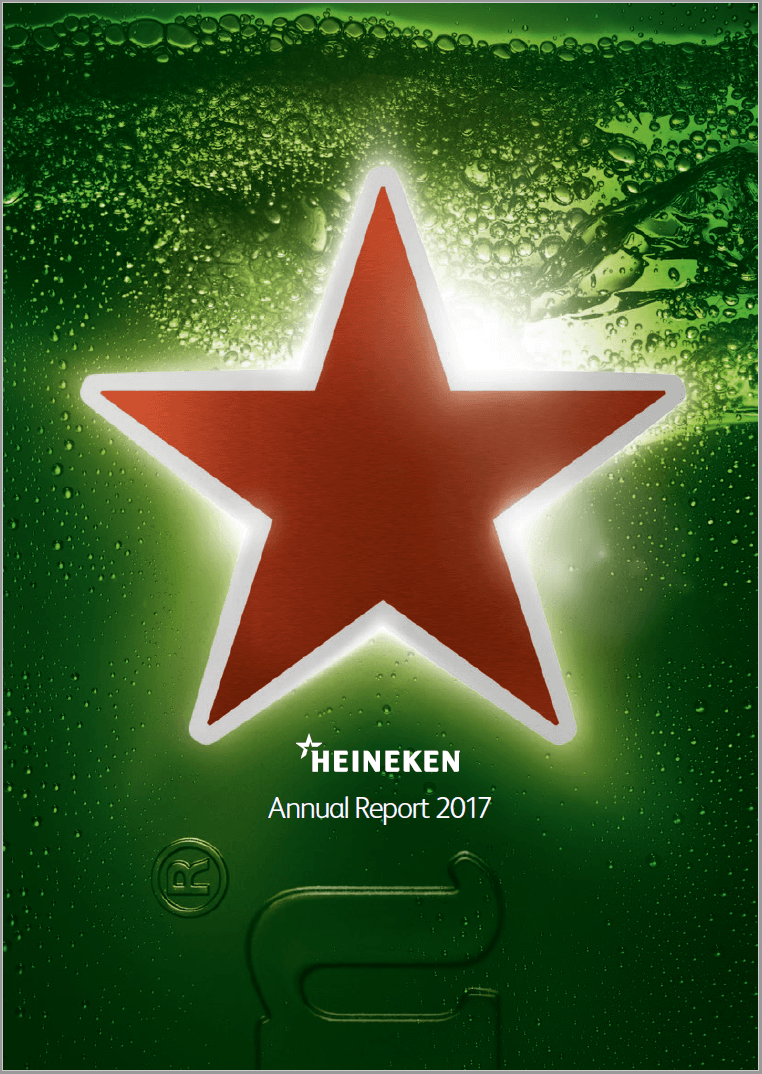
The brand strategy of Heineken
Heineken Netherlands wants to be a challenging, innovative, proud, and distinctive leader in the Dutch food sector. They are the product leader in the Dutch beer and cider market and an independent global brewer. Their marketing strategy is product leadership: excelling in product quality, innovation, and brand marketing. They apply the following core values: Fun, Passion for quality, Respect for people and the environment. Heineken naturally has various sub-brands, but the main brand is Heineken pilsner, which stands for adventure and experience: where do you drink it?
Heineken Annual Report 2017
The annual report of Heineken is available both as a downloadable PDF and for online viewing. What immediately stands out is that there are quite a few photos, but not large and always with varying photo ratios. This creates a somewhat restless overall look and your attention is not directed to a specific image, so focus is difficult. Also, some images are so small that you don’t understand what exactly they are about. Consistency is lacking.
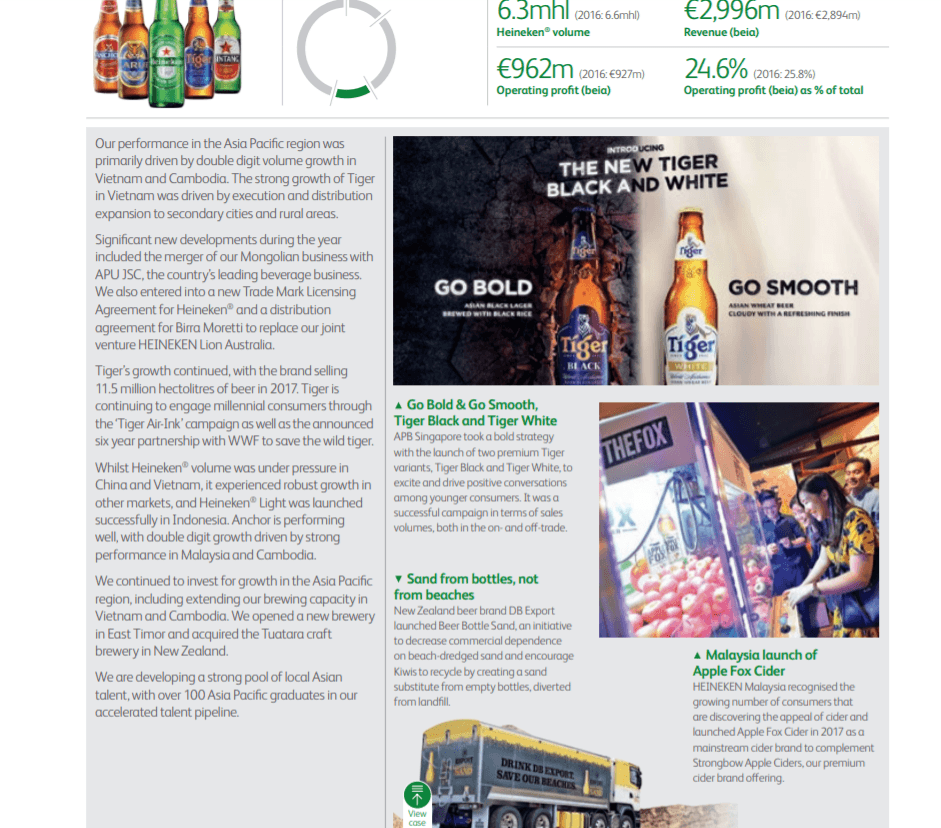
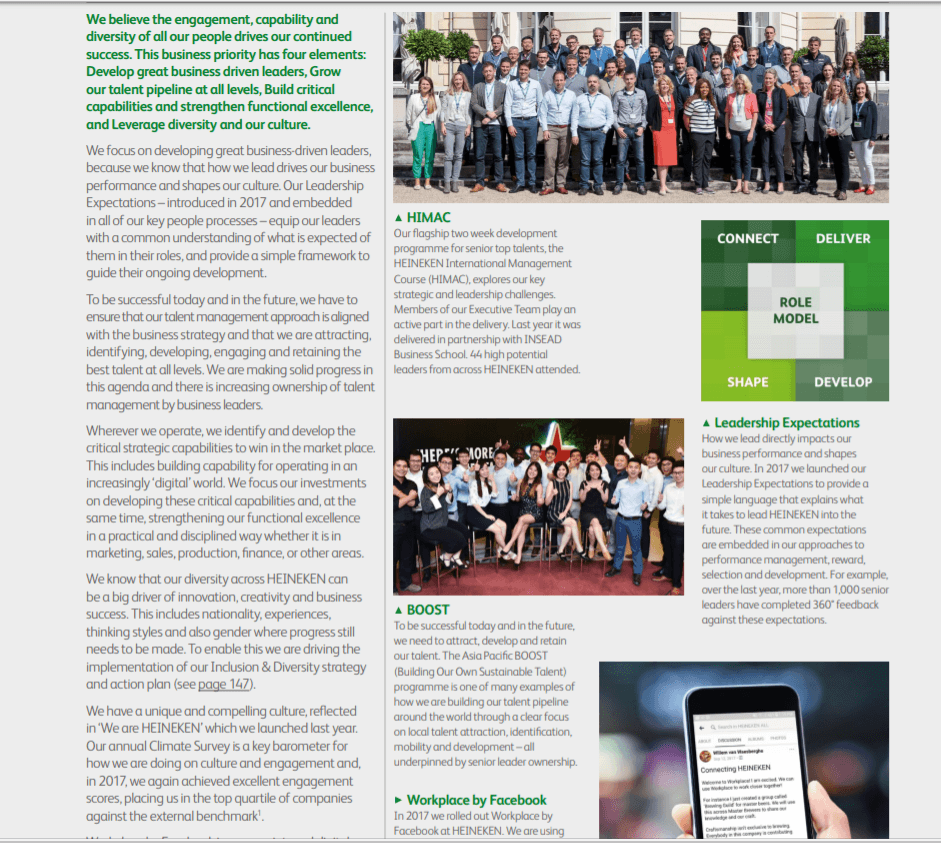
The imagery Heineken uses in its report feels ‘haphazard’. The style and color scheme differ per photo and make the graphically neatly designed report look messy. Especially considering that Heineken makes limited use of imagery, we see this as a missed opportunity. It also surprises us quite a bit; for a globally operating player with a marketing focus, it should not be a problem to communicate (and deliver) a consistent visual language, right?
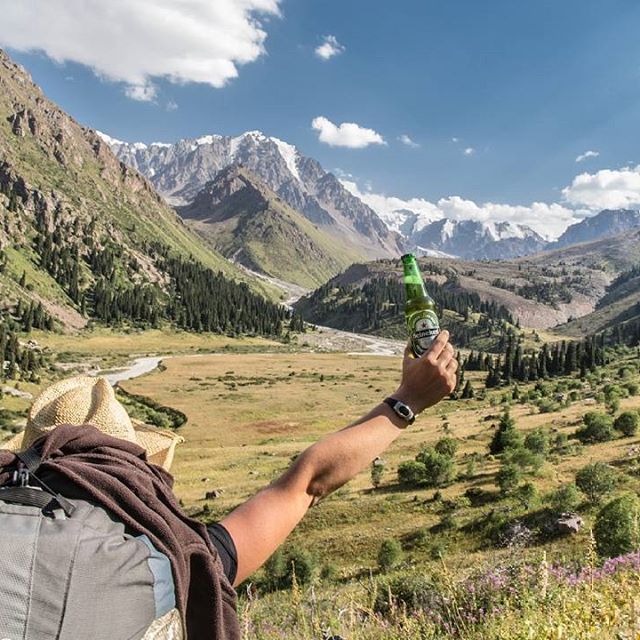 Partly because it comes across as found imagery without much focus and lack of consistency, it looks overall like a newsflash page or a cut-and-paste book with interesting articles and pictures but does not form a whole. Among the photos, there is not a single consistent style line because:
Partly because it comes across as found imagery without much focus and lack of consistency, it looks overall like a newsflash page or a cut-and-paste book with interesting articles and pictures but does not form a whole. Among the photos, there is not a single consistent style line because:
- no overarching concept
- no choice for people or product
- no consistent use of colors
- the lighting is different each time
- one image is calm, the other busy
- sometimes a wide shot and sometimes a close-up
Looking at the brand promise, we see that especially respect for people and the environment is emphasized in the imagery. Also, the fact that it is a global, international player is clearly visible. This is because the images they use mainly contain green tones (also due to Heineken green, of course), show an outdoor/nature environment, and people working on the land. People of different nationalities and offices in various countries are depicted.
Do’s
 In the first part of the annual report, I find that the brand promise and message are not yet sufficiently utilized and expressed. Show not just part but the entire brand promise. You can place more varied images throughout the annual report that, for example:
In the first part of the annual report, I find that the brand promise and message are not yet sufficiently utilized and expressed. Show not just part but the entire brand promise. You can place more varied images throughout the annual report that, for example:- Emphasize the other core values more and illustrate the promise of the main brand Heineken pilsner and its associated adventure and experience (see images). For example, you could create a series of atmosphere images in various situations where people drink Heineken. Someone by a campfire in nature, someone who just finished a challenging work situation and has time for a beer, a daredevil who is handed a beer at the moment of triumph. Or show employees who are pivotal in the big process, the farmer on his land, the brewer in the factory, the transporter on a boat, the CEO during a tasting. This way, you combine the personal face with fun and passion for quality in one go (showing different links that passionately build one common goal and brand) and you do more storytelling in your annual report.
- Find one line in style and use of imagery, think about / pay attention to recognizability, color, size, proportions, calmness (or busyness), therhythm spread over the pages and a fixed format.
The brand strategy of KPN
KPN’s goal is to make life freer, more fun, and easier by connecting people. They work on their safe, reliable, and future-proof networks and services so that everything and everyone is always and everywhere connected while simultaneously creating a more prosperous and cleaner world. The three most important core values are: customer, together, and simplicity. The question is: do we see that reflected in the annual report?
KPN Annual Report 2017
The annual report of KPN is an online annual report with a downloadable extensive print version. The first thing that becomes clear is that they have actually given the slogan a face, a figurehead for KPN. The lady in question, Gian van Grunsven, appears on the front of the annual report, and the online annual report starts with a 21(?!) minute documentary in which this journalist investigates and interviews her immediate surroundings.
I applaud the use of photo and video. Preferably also presented in a creative way. And this is certainly an attempt to creatively visualize the annual report. Emphasis on attempt. I appreciate the attempt, but how wrong they go with this film. KPN buys the derived integrity of a journalist with the aim of promoting the brand. Under the guise of objectivity, the brand markets its products and services; Gian’s investigation surprisingly works out excellently for the brand. It undermines the credibility of the journalist and the KPN brand.
Enzo Knol also appears in that video, a spot-on choice. He is a vlogger who fits the brand: if anyone uses mobile and internet, it is him. He also never pretends to make objective items and would therefore be a more sincere figurehead.
Do’s
 Other imagery in the annual report: the portraits are good quality. However, there is no line: one has a dark background, the other a light background, and the lighting is different each time. That can be possible, but do not place portraits that do not match in style on the same page. Also, the men look somewhat unnatural and forced.
Other imagery in the annual report: the portraits are good quality. However, there is no line: one has a dark background, the other a light background, and the lighting is different each time. That can be possible, but do not place portraits that do not match in style on the same page. Also, the men look somewhat unnatural and forced.- A film that takes center stage and ‘opens’ the annual report: yes! But the film is too long, so keep it short and concise.
- Do not use a journalist for it. Journalism stands for an objective and independent report. Choose someone who fits the brand better. The vlogger, for example.
- The film itself has a high amateurish and forced level. The speed-ups, the little tune at the beginning, the awkward staring look of the journalist, the outfit she wears throughout the film making it seem like everything was recorded in one day – and thus quickly –, the overly rehearsed scenes and recited lines. It just doesn’t work now. Take time for the recordings, pay attention to details, and ensure professional editing.
In my opinion, KPN missed an opportunity with this annual report.
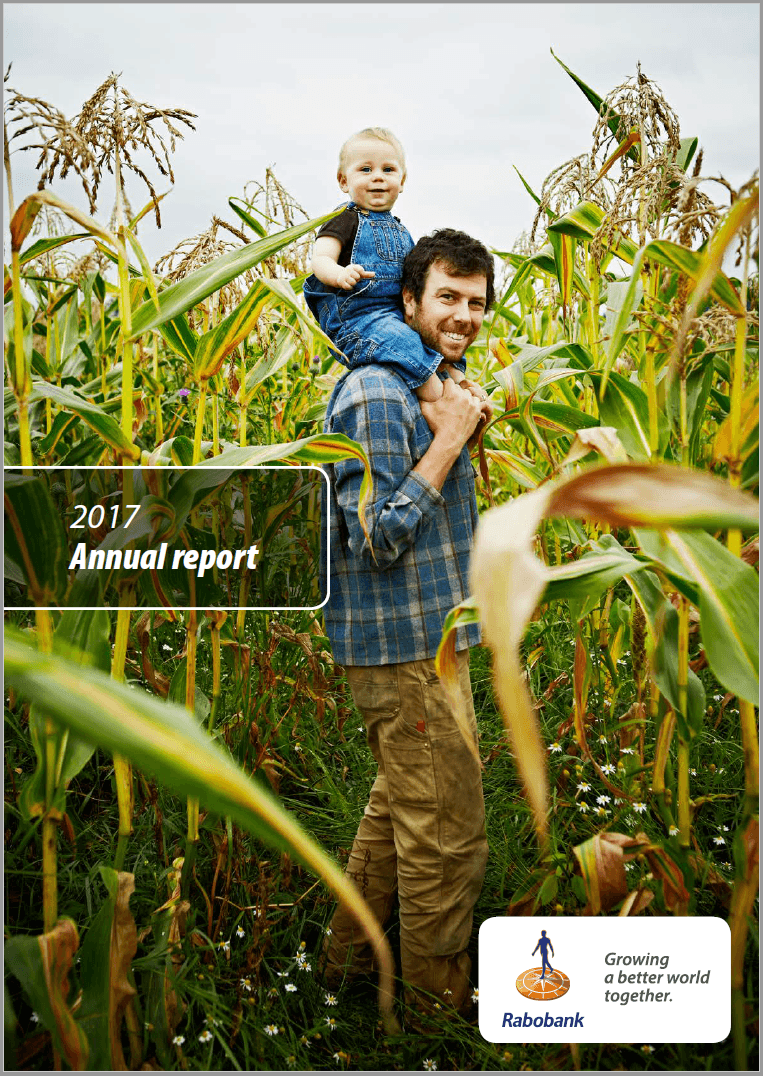
The brand strategy of Rabobank
Rabobank is a social bank. They want to make a substantial contribution to welfare and prosperity in the Netherlands and the solution to the global food issue. Their ambition is to be the most customer-oriented bank in the Netherlands and a leading food and agri-bank in the world, the local bank.
The 4 core values are respect, integrity, professionalism, and sustainability. How is this illustrated in the annual report?
The Rabobank Annual Report
The annual report of Rabobank consists of a downloadable PDF and printed version. No online report.
I find Rabobank an example of an annual report that looks good. Imagery is certainly not lacking. The annual report is clearly structured and full of photos up to the appendix.
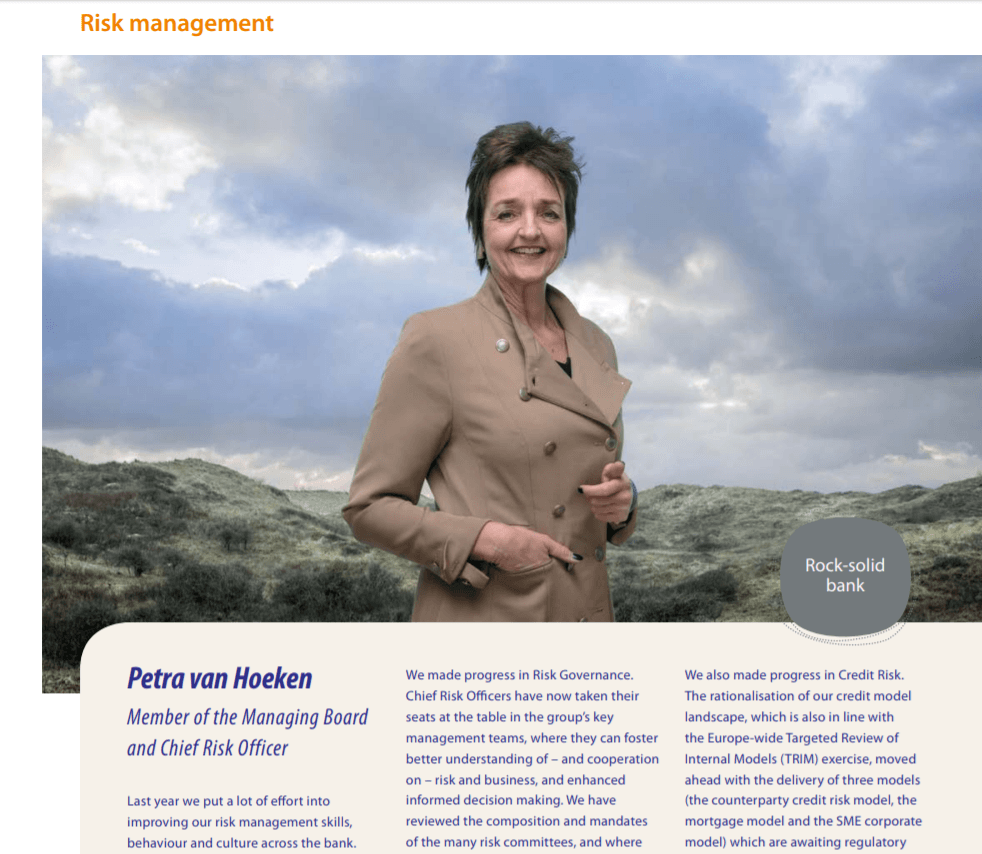

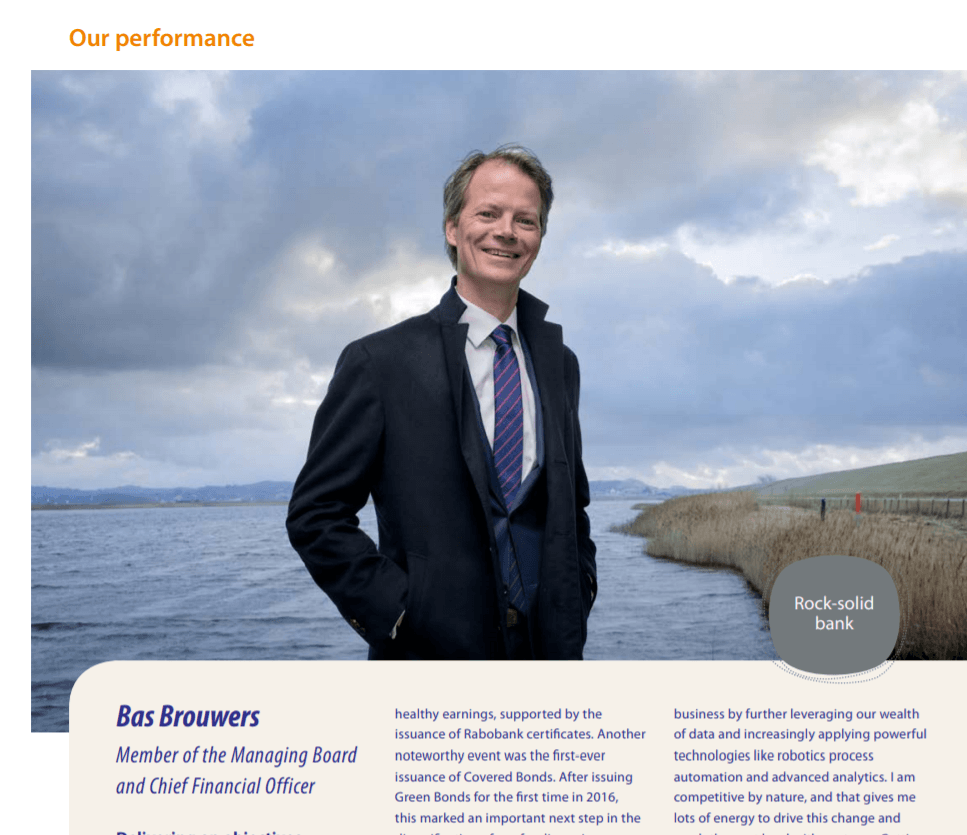
Strong portraits in the Rabobank annual report
What is also very clear in this annual report is that the images included were actually made for this document. It supports the message in 2 ways:
- The board members are all portrayed in a sincere and sympathetic way. It comes across as natural and relaxed. When I see the people, I have a positive feeling about them and really feel that I see the face behind it and feel a connection.
- Furthermore, the style and environment of the portraits are unmistakable: all are portrayed in nature wearing a warm coat with sometimes a hat or scarf. This also emphasizes the human side (we don’t only see them in work environments and work clothes), and also shows care for the environment and surroundings; the “better world” from the slogan. It is a balanced whole and by placing management in nature, the gap with the other images used is small, and the bridge is made.
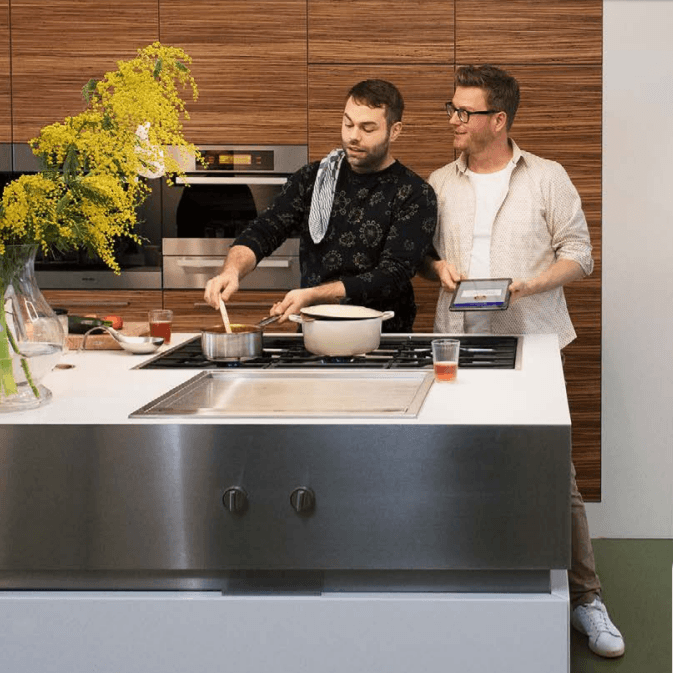
The only thing that bothers me is that besides the portrayed people, there are so few images that the photos that are included all demand a lot of attention. When you see that the only full-page photo of customers is a photo of a gay couple, it feels a bit like tokenism.
Do’s
- Of course, it makes sense that as a brand you want to reflect a cross-section of society and reach all kinds of customers. But if you want to show a cross-section of society, make sure you do so through multiple images and that you tell a story and convey your message through the quantity and variety. And not that the one photo included happens to be a photo of a gay couple.
- Besides the portraits, place just a bit more atmosphere photos. Three would already make a difference.
Conclusion: the most important don’ts for your annual report
From the annual reports described above, we derive the following don’ts:
- Don’t only look back. Besides looking back, it is nice to also look to the future. What we see as a development anyway is a 24/7 annual report, a platform where content is continuously added. In this context, make sure you are proactively capturing developments and events within your company and ensure your staff also consciously make this part of their system.
- Do not use just randomly gathered imagery. Hire a corporate photographer to take photos for your annual report and provide a clear briefing.
- Place enough images or videos. The readability of the report improves if you have a nice balance between text and imagery and makes it lighter and less dense.
- What I often saw is that the entire brand promise & core values were not highlighted. Don’t focus on a small part but also illustrate the rest.
- Don’t place only portraits, but do storytelling through atmosphere images and video. In a highly competitive market where the product matters less and the brand, feeling, and attitude are much more important, imagery is an ideal tool.
- I still saw too often that there was no consistency in the images used. Make it a clear coherent whole (think of style, light, proportions, subject, rhythm, etc.).
- Use of imagery is certainly encouraged, but make sure the message is clear. Better no vague photos that the reader cannot relate to. Keep videos short and concise.
- Do not collaborate with people & brands that do not fit your own brand. Figureheads are nice and can work well. Make sure you choose a person who matches the target audience.
- This also applies to all imagery: think about your target audience(s).
- Imagery is not an afterthought. Take time to inventory and create imagery. This starts with an annual report concept and ends in post-production. More time also means more attention to detail.
- Avoid negative or positive discrimination. Yes, we all want to show a cross-section of society. Convey that message through the quantity and variety of images and not by showing in one photo, for example, one redhead, one Asian, a dark gay couple, and a disabled child.
- Don’t show only portraits where mainly older, white men smile and pose in suits with ties if you often talk about diversity and gender ratios in the report.
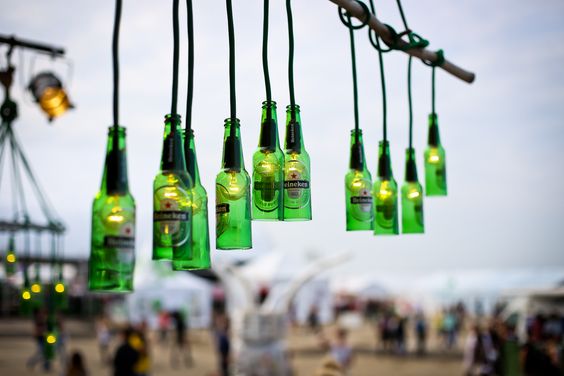
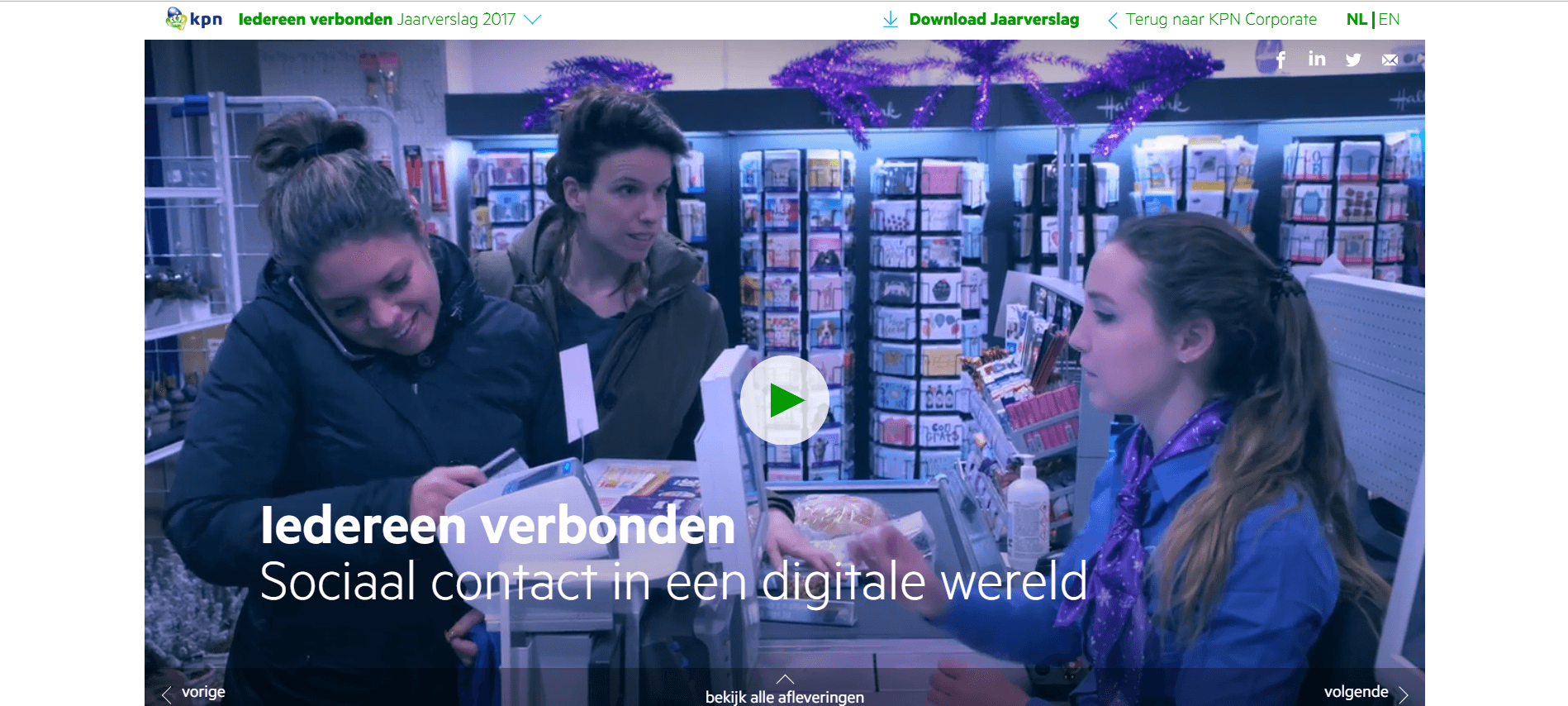
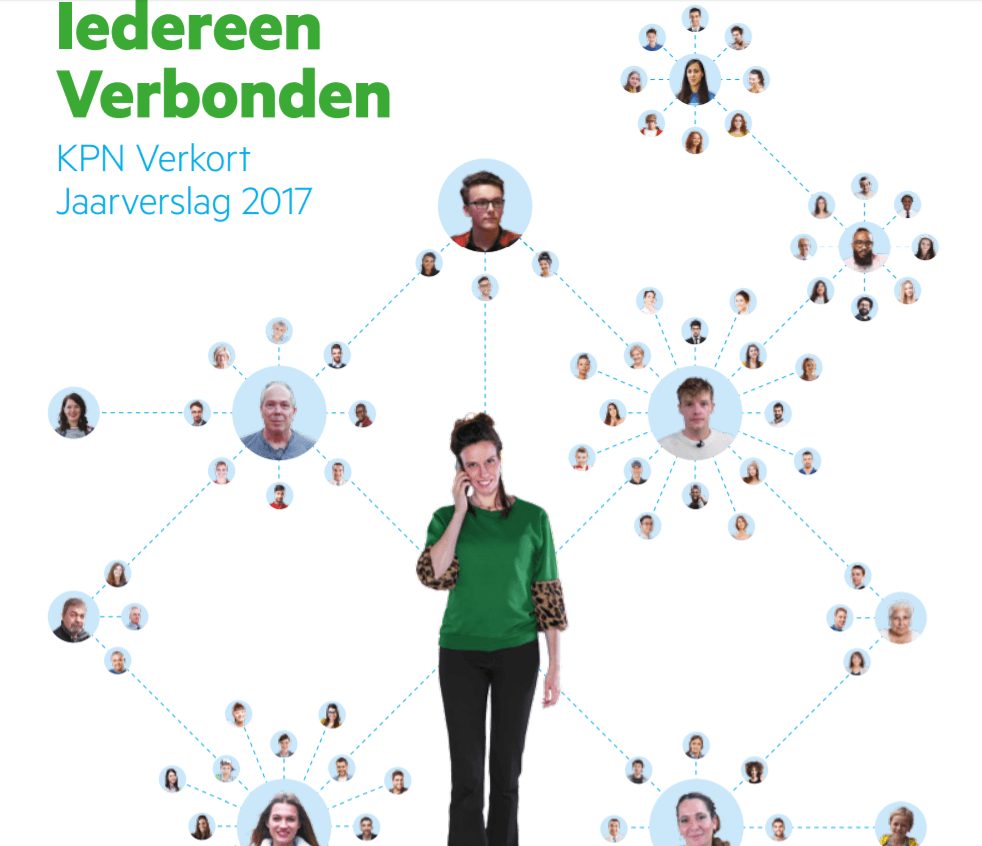
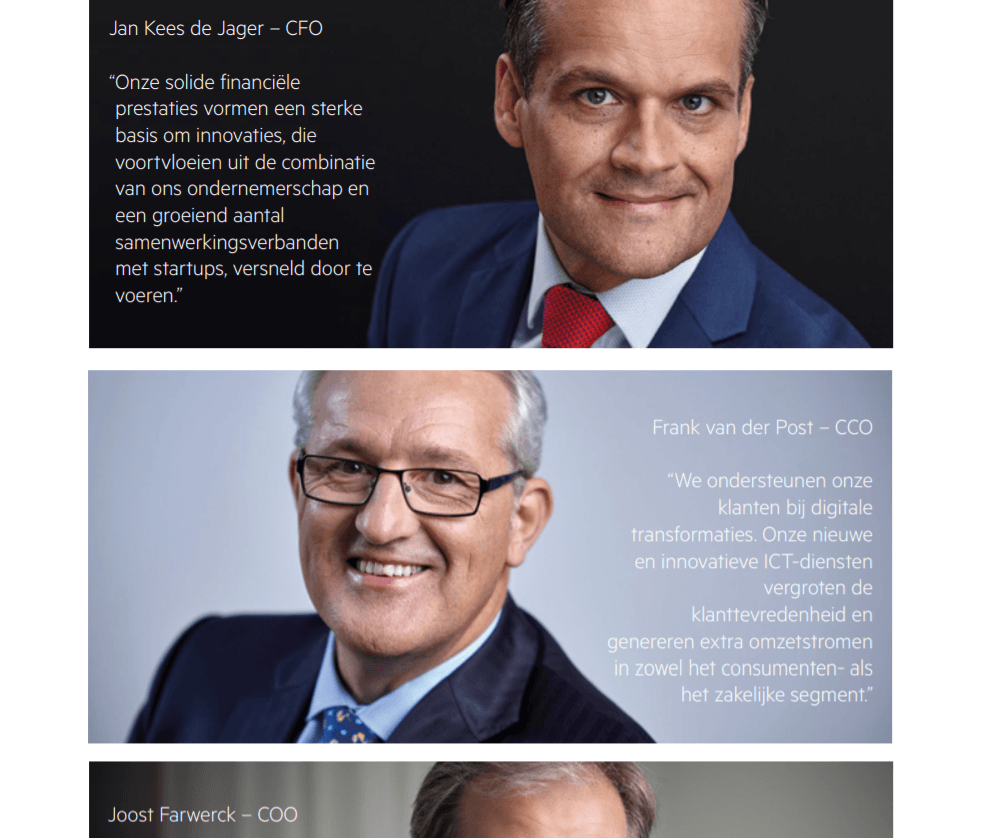 Other imagery in the annual report: the portraits are good quality. However, there is no line: one has a dark background, the other a light background, and the lighting is different each time. That can be possible, but do not place portraits that do not match in style on the same page. Also, the men look somewhat unnatural and forced.
Other imagery in the annual report: the portraits are good quality. However, there is no line: one has a dark background, the other a light background, and the lighting is different each time. That can be possible, but do not place portraits that do not match in style on the same page. Also, the men look somewhat unnatural and forced.